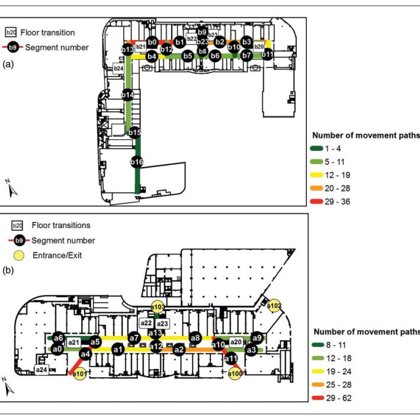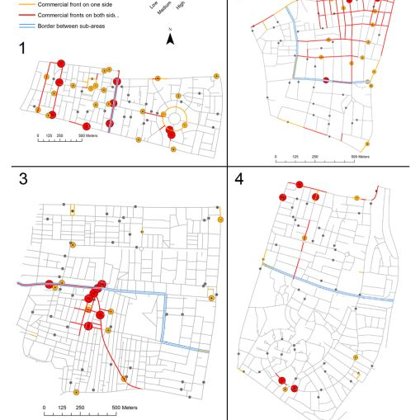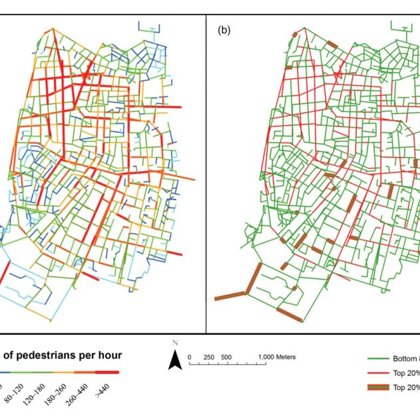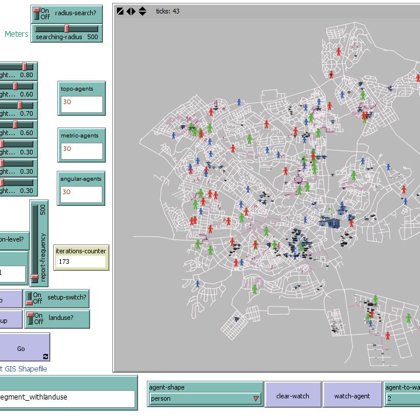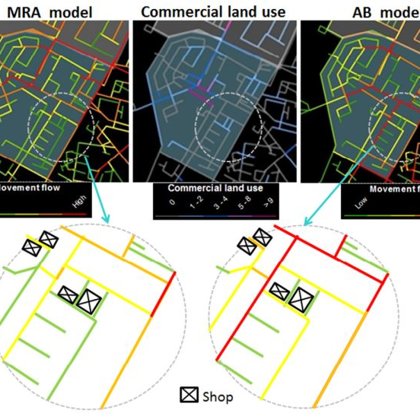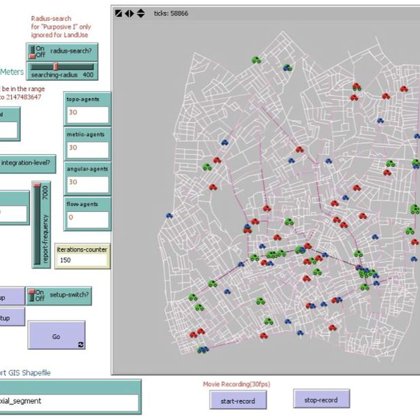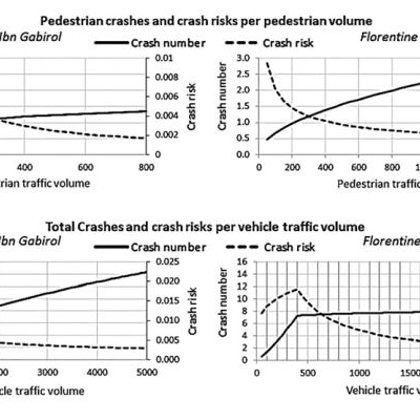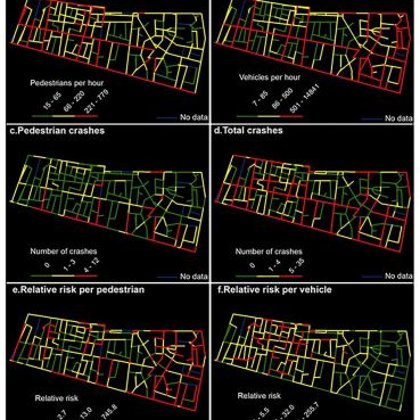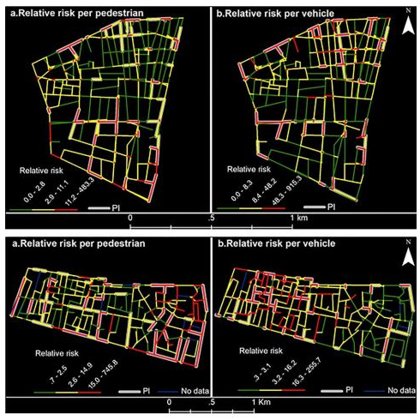URBAN
MOVEMENT MODELING
Information on the distribution of movement volumes over the street network is essential for the planning and design of walkable and sustainable urban environments. However, as collection of pedestrian data for all city streets is unfeasible, pedestrian volume models and movement simulation are constructed in our laboratory with respect to various urban areas and different planning approaches. The model are used for planning of not-motorized movement network, creation and maintenance of livable city centers, transportation planning and for evaluating crash risk. We also developed an agent-based (AB) pedestrian volume model at the urban scale.
Pedestrian volume modeling
Selected papers: Lerman, Rofe and Omer (2014); Omer, Rofe and Lerman (2015); Omer and Goldblatt (2017);
Movement simulation
We developed an Agent Based (AB) model for simulating movement in urban environment. The model was constructed by transforming the various street network centrality measures and land-use variables used in space syntax modeling into agents' spatial behavior parameters. The advantage of our AB model lies in its ability to simulate the combined effect of the street network structure and land-use pattern on movement flows in urban street networks.
Selected papers: Omer and Kaplan (2016); Omer and Kaplan (2017);
Evaluating Crash Risk
We developed a method for evaluating the spatial distribution of vehicle and pedestrian traffic crashes relative to the volume of vehicle and pedestrian movement in urban areas.
Selected papers: Omer, Gitelman, Rofè, Lerman, Kaplan and Doveh (2017);
